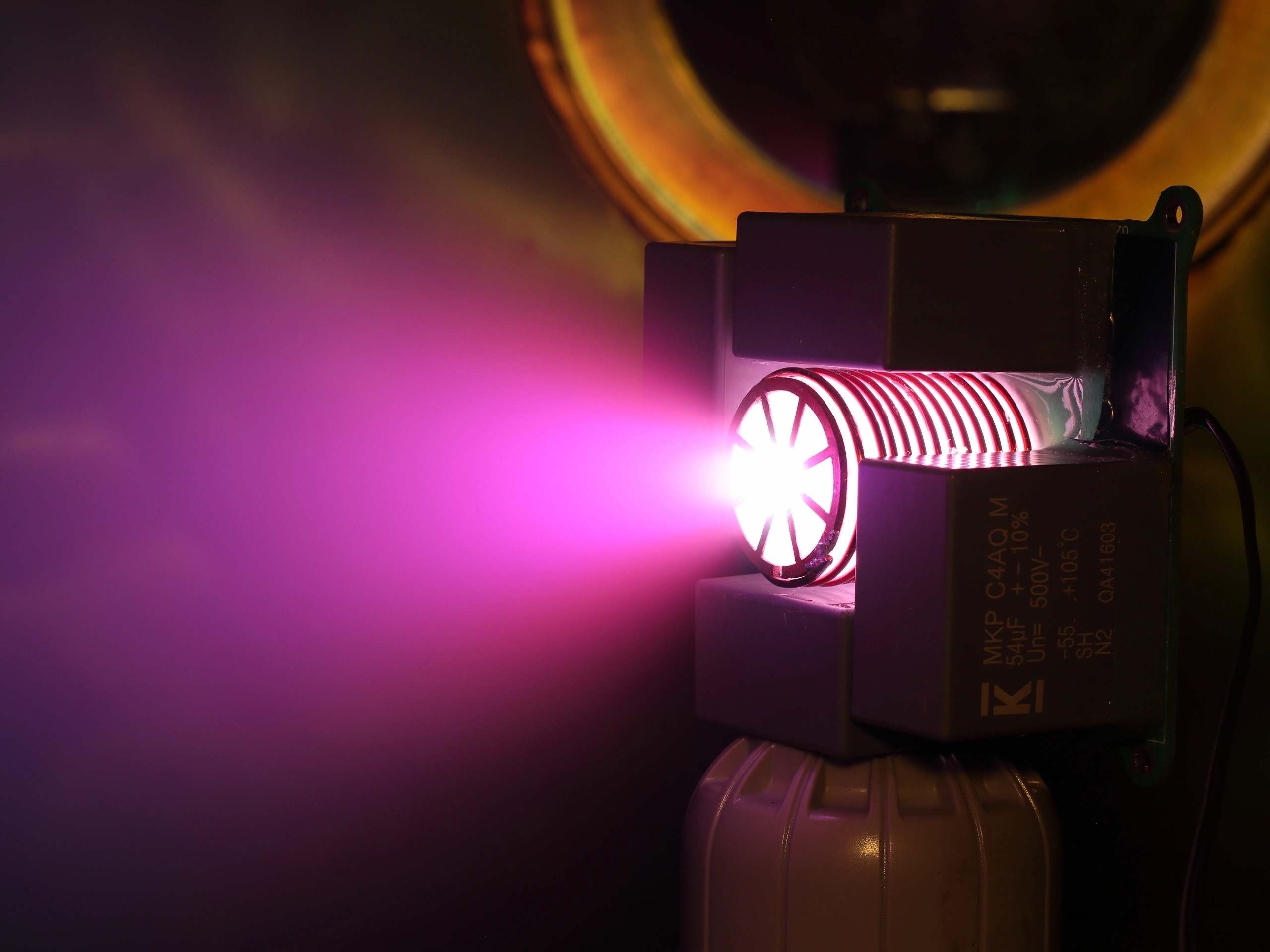Catalog
Search
188 products
View:
- Selected: 1Areas of use
- Selected: 0Item names
- Selected: 0Manufacturer
- Selected: 0Made in
- Selected: 0Additional
View:
188 products
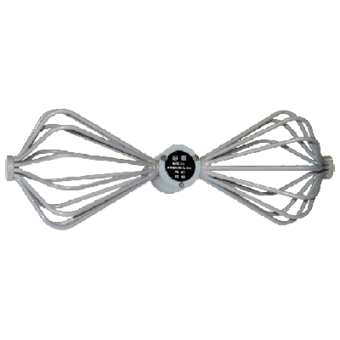
Measuring antenna P6-62
1 supp.
Technical specifications:
Frequency range (300-1000) MHz
SWR < 2
The limit of permissible error of the antenna coefficient, not more than ± 2.0 dB
Orthogonal polarization signal level -20 dB
Ambient air temperature from - 50 to + 60
Relative humidity of 95 % at + 35 ° C
Overall dimensions (HxWxD) 400x145x150 mm
Weight 1 kg
MNIPI
Minsk
Produced in: Belarus, Minsk

High-frequency signal generator G4-229
The generator is capable of operating both independently and as part of automated measuring systems with USB and IEEE-488 (CPC) interfaces.
Technical specifications
Frequency range (RF output) from 9 kHz to 6 GHz
Frequency range (LF outputs) from 0.001 Hz to 30 MHz
Frequency tuning discreteness (RF output) 1 Hz
Frequency tuning discreteness (LF outputs) 0.001 Hz
The main error of the frequency setting is ± 3x10-7 Hz
The range of setting the output signal power level at the main RF output is from minus 120 to 13 dBm
The range of setting the signal amplitude at a load of 50 ohms (LF outputs) from 0.01 to 5 V
The basic error of setting the reference power level (RF output) ± (0.5 – 1.0) dB
The basic error of setting the amplitude of sinusoidal signals (LF outputs) ± (3 – 15)%
Instability of the signal power level for any 15-minute time interval (RF output) no more than 0.1 dB
Metrological characteristics of the generator in the FM operation mode:
- frequency range of the modulating signal from 1 to 100 kHz
- frequency deviation setting range (taking into account the carrier frequency value) from 12.5 to 4000 kHz
- the basic error of setting the frequency deviation ± (10 – 20)%
Metrological characteristics of the generator in AM operation mode:
- frequency range of the modulating signal from 0.05 to 5.0 kHz
- the range of setting the amplitude modulation coefficient from 1 to 100 %
- the basic error of setting the amplitude modulation coefficient (when operating from an internal signal source) ± (0.15 M + 0.2)%
Metrological characteristics of the generator in the IM operation mode:
- the duration range of modulating pulses from 100 ns to 20 s
- the range of the modulating pulse repetition period from 140 ns to 30 s
- the difference in the duration of the output RF pulses from the duration of the modulating pulses ± 100 ns
Operating temperature range from minus 10 to 40 °C
AC power supply 220 V, 50 Hz
Power consumption, not more than 100 VA
Overall dimensions, mm 498x136x487
Weight, not more than 15 kg
TEKHNOYAKS
Moscow
Produced in: Moscow
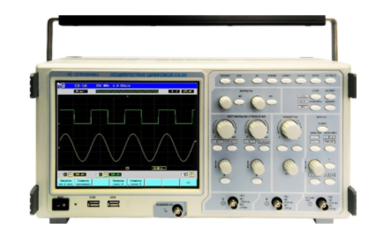
Digital oscilloscope S8-56
The oscilloscope is capable of operating both autonomously and as part of automated measuring systems with interfaces such as USB, RS-232, ETHERNET, IE-488 (CPC).
Technical specifications
Number of channels 2
The input impedance of the channels is 50 ohms and 1 mOhm
Channel bandwidth at an input impedance of 50 ohms from 0 to 350 MHz
Channel bandwidth at an input impedance of 1 mOhm from 0 to 200 MHz
Sampling rate 1600 MHz
The ADC bit rate is 9 BITS
Deviation coefficients from 1 mV/div to 50 V/div
Scan coefficients from 1 ns/div to 10 s/div
Startup modes automatic, standby, single
Synchronization internal and external
The basic error of measuring the amplitude is ± 3%
The basic error of measuring time intervals is ± (0.3 – 20)%
Operating temperature range from 5 to 40 °C
AC power supply 220 V, 50 Hz
Power consumption, no more than 75 VA
Overall dimensions, mm 420x213x181
Weight, not more than 7 kg
TEKHNOYAKS
Moscow
Produced in: Moscow

Generator of test pulses G9-1A
The generator is capable of operating both autonomously and as part of automated measuring systems with interfaces such as RS-232 and ITHERNET.
Technical specifications
The range of setting the pulse duration at the outputs:
- τ1 from 100 ns to 10 s
- t2 from 101 ns to 10.1 s
- t3 from 10 ns to 3600 s
The range of setting the time interval between the pulse fronts at outputs t1 and t2 (∆tx) is from 0 to 3600 s
The main error in setting the pulse duration at outputs t1 and t2 ± (δ0 • t1,2 + 1•10-8 c)
The basic error of setting the pulse duration at the output is τ3 ± (δ0 •τ3 + 2 •10-9 s)
The main error in setting the duration of the time interval (∆tx):
∆tx from 0 to 1000 s ± (δ0 •∆tx + 2•10-10 s)
∆tx from 1000 to 3600 s ± (δ0 •∆tx + 2•10-9 s)
Pulse amplitude at outputs τ1 , τ2 and τ3 at a load of 50 ohms, not less than 1.2 V
The nominal frequency value of the reference quartz oscillator is 10 MHz
Relative error in the frequency of the quartz oscillator (δ0 ), no more than ± 2x10-7 in 24 months
The pulse repetition frequency setting range at outputs τ4 and τ5 is from 0.1 Hz to 300 MHz
The main error in setting the pulse repetition frequency at outputs τ4 and τ5 ± δ0 •F = τ4.5
Pulse amplitude setting range at outputs τ4 and τ5 from 0.05 to 1 V
The main error in setting the pulse amplitude at outputs τ4 and τ5 ± 20%
Fixed values of pulse durations at the output of τ6 1 and 5 microseconds
The basic error of setting the pulse duration at the output is τ6 ± (0.2•τ6 + 3 •10-7 s)
The nominal value of the pulse repetition frequency at the output is τ6 100 kHz
The main error in setting the pulse repetition frequency at the output is τ6 ± δ0 •F = τ6
Fixed values of the pulse amplitude at the output of τ6 minus 10 V; minus 2.5 V; 2.5 V; 10 V
The main error in setting the pulse amplitude at the output is τ6 ± 20%
Operating temperature range from 5°C to 40 °C
AC power supply 220 V, 50 Hz
Power consumption, not more than 100 VA
Overall dimensions, mm 442x160x452
Weight, not more than 10 kg
TEKHNOYAKS
Moscow
Produced in: Moscow
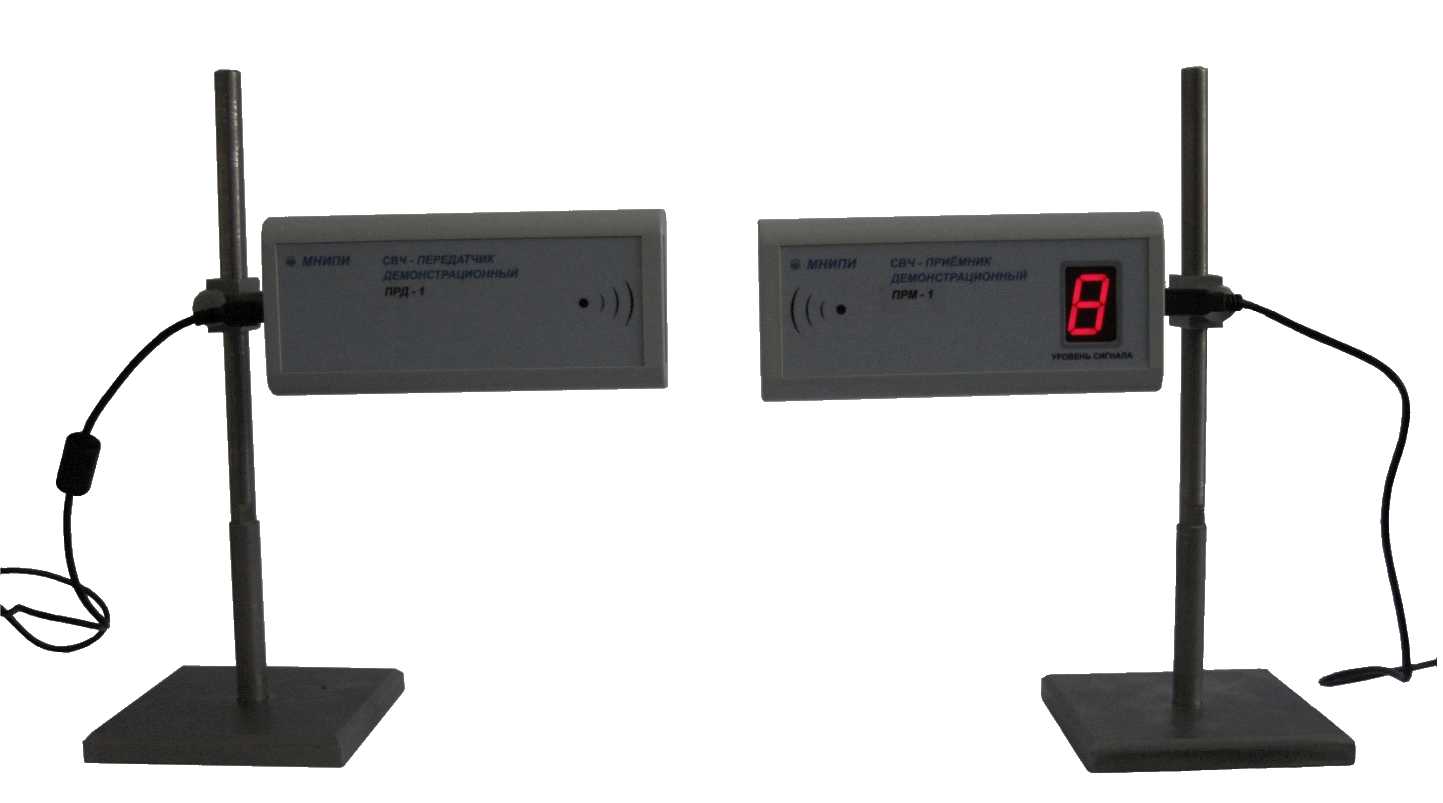
A set of devices for studying the properties of electromagnetic waves
The set of devices includes a microwave transmitter module, a microwave receiver module, a set of devices (metal reflecting screens, a refractive prism, an absorbing screen, etc.) to demonstrate the properties of electromagnetic waves (radiation, absorption, reflection, refraction, interference, diffraction).
Technical specifications:
The wavelength of the microwave transmitter is 3 – 4 cm;
The average value of the energy flux density emitted by the microwave transmitter meets the requirements of the SanPiN 2.4/2.1.8.9-36-2002 (no more than 10 MW/ sq. m.).
Receiver (transmitter) weight, not more than 0.3 kg
Overall dimensions of the receiver (transmitter) 172x25x77 mm
The microwave receiver module has a built-in interface for connecting to a personal computer and provides the ability to display the measured information on the PC screen.
The kit includes an electronic media with software (CD-ROM) to demonstrate the operation of the equipment on the monitor screen of a personal computer.
MNIPI
Minsk
Produced in: Belarus, Minsk

Low-frequency signal generator G3-132
Technical specifications:
The waveform is sinusoidal, rectangular (TTL)
Frequency range from 0.1 Hz to 10 MHz
Frequency setting error ±0.02%
Frequency instability ±0.01% in 15 min
Signal amplitude ± 2.5 V at 50 ohm load
±5 V without load
Limits of adjustment of the output signal level from 2 mV to 1.85 V (skz) at a load of 50 ohms
from 4 mV to 3.75 V (scz) without load
Signal level unevenness ± 5% at frequencies from 0.1 to 10 Hz
relative to 1 kHz ± 2% at frequencies from 10 Hz to 1 MHz
±10% at frequencies from 1 to 10 MHz
Harmonic coefficient ± 0.2% at frequencies from 10 to 100 Hz
±0.07% at frequencies from 100 Hz to 20 kHz
± 0.2% at frequencies from 20 to 120 kHz
±1% at frequencies from 120 kHz to 1 MHz
±4% at frequencies from 1 to 10 MHz
Parameters of the rectangular (TTL) signal form log. "1" 3 2.4 V; log. "0" ≤ 0.4 V
In the frequency range from 0.1 Hz to 2 MHz, the duration of the front, the cutoff is not more than 100 ns
Operating temperature range from minus 10 °C to + 40 °C
Power supply ~230 V, 50 Hz; 10 V×A
Dimensions; weight 210×71×255 mm; 2 kg
MNIPI
Minsk
Produced in: Belarus, Minsk
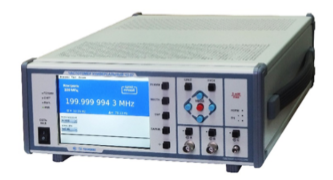
Universal frequency meter Ch3-97
The device successfully combines simplicity of design, modern design, convenience, clarity of control and obtaining information about the measured physical quantity.
Technical specifications
Frequency and period of sinusoidal signals (inputs A, B) 0.001 Hz - 300 MHz
Frequency and period of video pulse signals (inputs A, B) 0.001 Hz - 300 MHz
Frequency of continuous sinusoidal oscillations (input C) (0.3 – 37.5) GHz
Carrier frequency of a continuous radio pulse sequence (IM) signal (input C) Fn = (0.3-37.5) GHz, from 0.3 microseconds to 1ms, Fsl from 100 Hz to 1 MHz, from 2 to 103
Frequency ratio (inputs A, B) from 1 to 3x109
Pulse duration 5 ns - 1000 s
The duration of the front, the decay of the pulses is 5 ns - 100 microseconds
Time interval from -1000 to 1000 s
Phase difference of two synchronous sinusoidal signals from minus 180° to 180°
The measurement error of the phase difference of two synchronous sinusoidal signals is ± 2.3 ° at a signal amplitude of 1 V
Setting range of trigger levels (inputs A, B) from - 2.0 to 2.0 V
The error of setting the trigger levels (inputs A, B) ± 0.01 V
Input signal level:
•for sinusoidal signal (inputs A, B) (0.03 - 10.0) V
•for video pulse signal (inputs A, B) (0.1 - 10.0) V
•for a sinusoidal signal (input C) 0.1 - 5 MW
Input resistance
•Inputs A, B (50±2.5) ohms; (1±0.1) MOm/100 pF
•Input With (50±2.5) ohms
Nominal frequency value of the reference quartz oscillator 10 MHz
Relative error in the frequency of the quartz oscillator, no more than ± 2x10-7 in 24 months
Operating temperature range from minus 10 to 50 °C
AC power supply 220 V, 50 Hz
Power consumption, not more than 100 VA
Overall dimensions, mm 306x129.5x430.6
Weight, not more than 8.5 kg
TEKHNOYAKS
Moscow
Produced in: Moscow
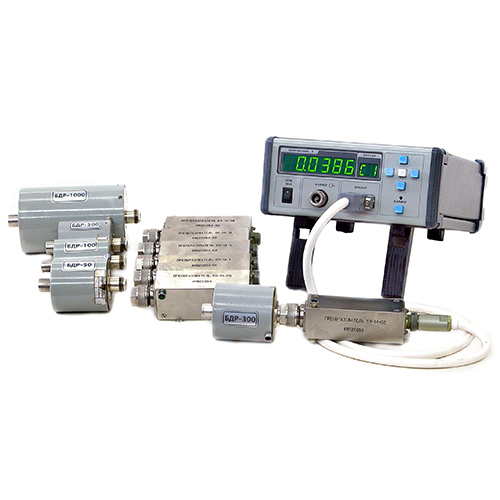
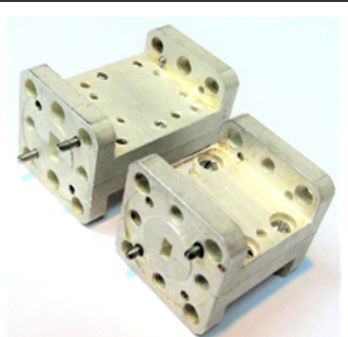
FNCH-78
Structurally, waveguide LPF 37-78 GHz are made on metal plates located in the center of the E-plane of the waveguide.
These LFS can be used in conjunction with waveguide bandpass filters to increase the suppression of spurious signals and expand the upper band of the barrier.
Basic properties
Low bandwidth losses;
A wide barrage strip.
Operating conditions
Operating temperature range from minus 10
up to 50 ° C;
The relative humidity of the air is up to 98% at a temperature of 25 ° C.
Technical specifications
Waveguide cross section, mm 3.6×1.8
Bandwidth Fh-Fb at the level of -1 dB, GHz 60-78
The barrier band at the level of -30 dB, GHz 85-120
Bandwidth loss, 0.5-1.2 dB
TEKHNOYAKS
Moscow
Produced in: Moscow
Oscilloscope S1-167/2
Designed for the study of periodic electrical signals by visual observation and measurement of their amplitude and time parameters on the scale of the CRT screen in the frequency band 0 - 25 MHz with a built-in multimeter measuring voltage and DC power, the average square value of voltage and AC power, DC electrical resistance.
Technical specifications:
Vertical deviation
Number of channels 2
Bandwidth 0-25 MHz
Deviation coefficients 2 mV/div-10 V/div (step 1-2-5)
Installation error ± 3%
Rise time of PH <= 14 nsec
Input impedance 1 mOhm/23 pF, with divider 1:10-10 mOhm/12 pF
with open input <=110 V
with closed input <=110 V
with divider 1:10 <= 250 V
range U post. U AC: 1 mV–500 V
Error 0.1% (U post); 0.3% -1% (U perem. 40 Hz–100 kHz)
Range I post., I AC.: 1 mA–2 A
Error: 0.25% (I post.); 0.5% (I perem. 40 Hz–5 kHz)
R Range: 1 Ohm–1 mOhm
Error R: 0.2%
3.5-digit indicator
Automatic selection of limits.
MNIPI
Minsk
Produced in: Belarus, Minsk

Frequency and time standard hydrogen Ch1-76A
NNPO im. M.V.Frunze
Nizhny Novgorod
Produced in: Nizhny Novgorod
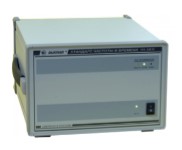
Rubidium frequency and time standards H1-1011/1
The modular construction principle makes it easy to adapt the devices to the specific requirements of the consumer. The standards are available in four versions – H1-1011, H1-1011/1, H1-1011/2 and H1-1011/3, which differ in metrological characteristics and a set of installed devices (modules). The built-in diagnostic system allows you to quickly determine the operability and condition of the main devices of the standards.
On the front panel of the devices H1-1011 and H1-1011/2 there is an LCD display and a control panel, with which you can quickly receive information about the current parameters of the devices included in the devices and adjust the frequency of the output signals.
The H1-1011 and H1-1011/2 standards can receive chronometric information from GLONASS and GPS satellite radio navigation systems and use it to synchronize the local time scale and automatically adjust the actual frequency value of the built-in highly stable rubidium frequency standard.
The H1-1011 and H1-1011/2 standards include:
rubidium frequency standard H1-1014;
MPR-01 satellite radio navigation systems receiver module;
amplifier module for highly stable sinusoidal signals (at the customer's choice):
MUS-01 (3 independent outputs 10 MHz, connector type SR-50-73FV);
MUS-02 (3 independent outputs of 5 MHz, connector type SR-50-73FV);
MUS-03 (3 independent outputs of 1, 5 and 10 MHz, connector type SR-50-73FV);
MUS-04 (6 independent outputs of 1, 5 and 10 MHz in any combination at the customer's choice, SMA connector type);
MS synthesizer module with software (SMA connector type) instead of an amplifier module (at the customer's request).
The scope of delivery (at the request of the customer) includes an antenna for the SRNS receiver as part of:
antenna unit;
mounting device;
antenna cable (maximum length 60 m).
The H1-1011/1 and H1-1011/3 standards include:
the rubidium frequency standard H1-1013;
two modules of amplifiers of highly stable sinusoidal signals (at the customer's choice):
MUS-01 (3 independent outputs 10 MHz, connector type SR-50-73FV);
MUS-02 (3 independent outputs of 5 MHz, connector type SR-50-73FV);
MUS-03 (3 independent outputs of 1, 5 and 10 MHz, connector type SR-50-73FV);
MUS-04 (6 independent outputs of 1, 5 and 10 MHz in any combination at the customer's choice, SMA connector type);
MS synthesizer module with software (SMA connector type) instead of an amplifier module (at the customer's request).
Ruknar
Nizhny Novgorod
Produced in: Nizhny Novgorod
